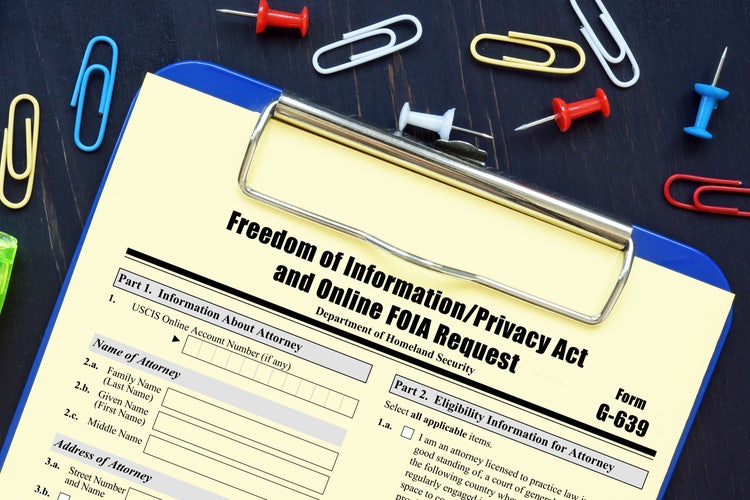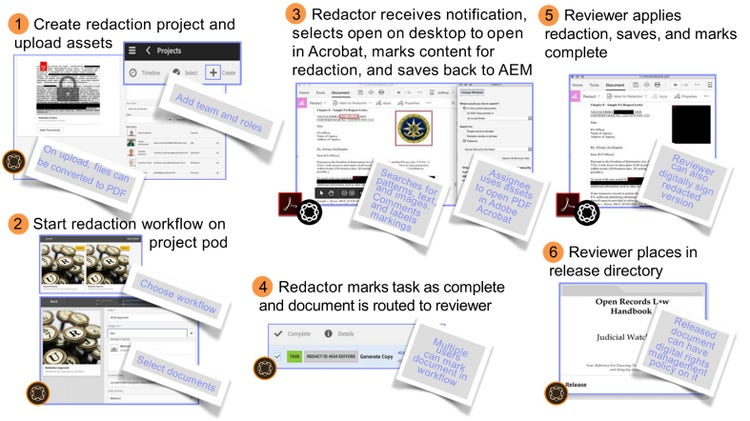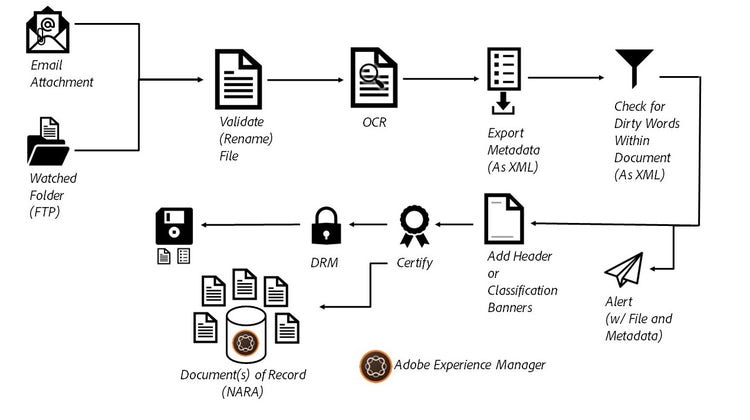Experience matters in records management

While openness and access to records has improved over the past few years, the Freedom of Information Act (FOIA) and Electronic Records Management (ERM) experience still has some room for improvement. FOIA allows anyone to request records from an agency and, unless the information is exempt from disclosure, the agency must provide the records within 20 business days. However, it often does not work as planned. The implementation of FOIA has nuances that make the process longer and more difficult for all involved. This has further been complicated by the pandemic. Many employees have limited access to records while working remotely, especially for sensitive or classified records.
Biggest FOIA challenges
For most FOIA teams, their biggest challenges are:
- Communication and internal/external collaboration
- Efficient use of resources to minimize the backlog and work as a team
- The increase in volume and complexity of FOIA requests
- Automating document archiving to comply with U.S. National Archives and Record Administration (NARA) mandates
- High turnover rate in the field
As government agencies look to address these challenges, Adobe's solutions can help with industry-standard tools and automation.

In 1991, Adobe launched the paper-to-digital revolution
Introduced by Adobe, the PDF/A file format was formalized by the International Organization for Standardization (ISO) and NARA, which is used for archiving and preserving electronic documents. Additionally, Adobe Acrobat is the standard for Department of Defense (DoD) Portable Document Format (PDF) and is compliant with the DoD 5015.2-STD.
Adobe Acrobat, Adobe Photoshop, a Digital Asset Manager (DAM), which is part of Adobe Experience Manager, can be used together to improve the experience for everyone involved in FOIA requests and Electronic Records Management (ERM). In most cases, agencies may have not thought about using a commercial-off-the-shelf (COTS) DAM as the ERM and workspace for FOIA. However, agencies can manage large volumes of digital assets by leveraging the full power of content and data (structured and unstructured) to curate, collaborate, and disseminate electronic records from a single source to a source location.
Adobe solutions are flexible and secure. They can exist both on-premises and in the cloud and work across multiple networks. And Adobe solutions, such as Adobe Experience Manager, Adobe Creative Cloud for Enterprise, Adobe Acrobat, and Adobe Sign, are FedRAMP Authorized. Plus, agencies can readily recruit around Adobe Acrobat, Adobe Photoshop, and DAM technology to help draw the next generation of FOIA professionals.
Streamline your business processes with the apps you love
For an agency fulfilling a FOIA request that requires redaction, a potential digital workflow using an Adobe solution could look like this:

As illustrated in this sample workflow, Adobe Experience Manager contains a robust workflow editor. This allows editing of existing processes and process steps. You can easily tailor workflows to your agency’s business rules. You can also add new process steps or extend them using Java or other application services.
Aiding the FOIA request workflow, documents and content can be checked in and out by those responsible for redaction. The redactors can perform the assigned tasks and forward it to the reviewer. The reviewer can then implement the recommended redactions and then release the final document. Digital or electronic signatures supported by Adobe Sign can be used for certifying the original request form and any subsequent communications, as well as in the validation/approval process. This allows agencies to track and audit assets throughout their lifecycles to ensure compliance to an overarching data governance structure consistent with NARA in the areas of metadata management, document and content management, data security management, and data quality management.
With data governance in place, there is also a living record of why the content was redacted. Adobe Acrobat allows users to permanently delete sensitive information from PDF files using powerful redaction tools. This solution also enables users to convert and validate PDF/A files to comply with the NARA transition to electronic government requirement.
Automating the mundane
As Adobe Experience Manager is integrated with Adobe Creative Cloud and other applications, data and content can be made accessible via RESTful WebServices, other APIs, and third-party solutions, such as ServiceNow, Microsoft Dynamics, Salesforce, and SAP, to help automate mundane processes. Adobe Experience Manager also contains a robust in-browser workflow editor and existing processes and process steps to adapt to an agency's business rules.
New process steps can be added or extended using Java or other existing application services. Adobe Experience Manager can integrate with email to send notifications containing links into Adobe Experience Manager upon HTML form or PDF submissions, tasks assigned, project update, and more. Below is an example of how PDF workflows can be automated.

Files can be received from various external sources, including scanners, external systems, watch folders, and more, and stored in the Secure Data Store, while Adobe Sign allows users to send, sign, track, and manage signature processes digitally. If desired, these formats can be converted into a common, ubiquitous format like PDF/A. For example, a United States law enforcement and public safety agency that is citizen facing, leverages Adobe Experience Manager to produce the document of record (NARA compliant) for over 30,000 transactions per day for their case management system. Additionally, metadata can be applied to the digital assets for classification, search, and other purposes.
Adobe Experience Manager Forms works with digital rights management (DRM) to provide an additional layer of security. This offers document protection with policies that reflect the sensitivity of the data, which is especially useful while working remotely.
Adobe can help
Adobe has a long history of providing digital document formats, having established the PDF/A format more than two decades ago. With deep knowledge about creating and managing digital documents, Adobe solutions can directly help reduce the burden of FOIA requests and improve the quality of services delivered. It is Adobe's commitment to continue providing powerful digital management solutions to government agencies.
To learn more about digital vs. electronic signatures, read Does Every Business Process Seem to Start and End with a PDF in Public Sector? here, or get in touch with your Adobe representative.